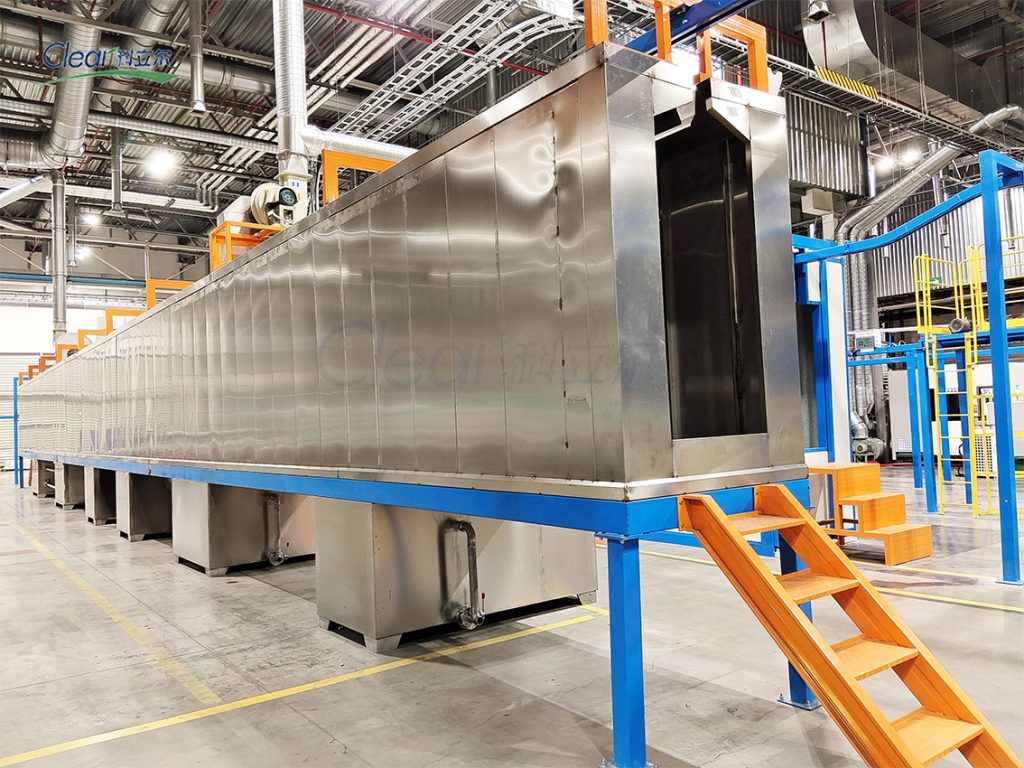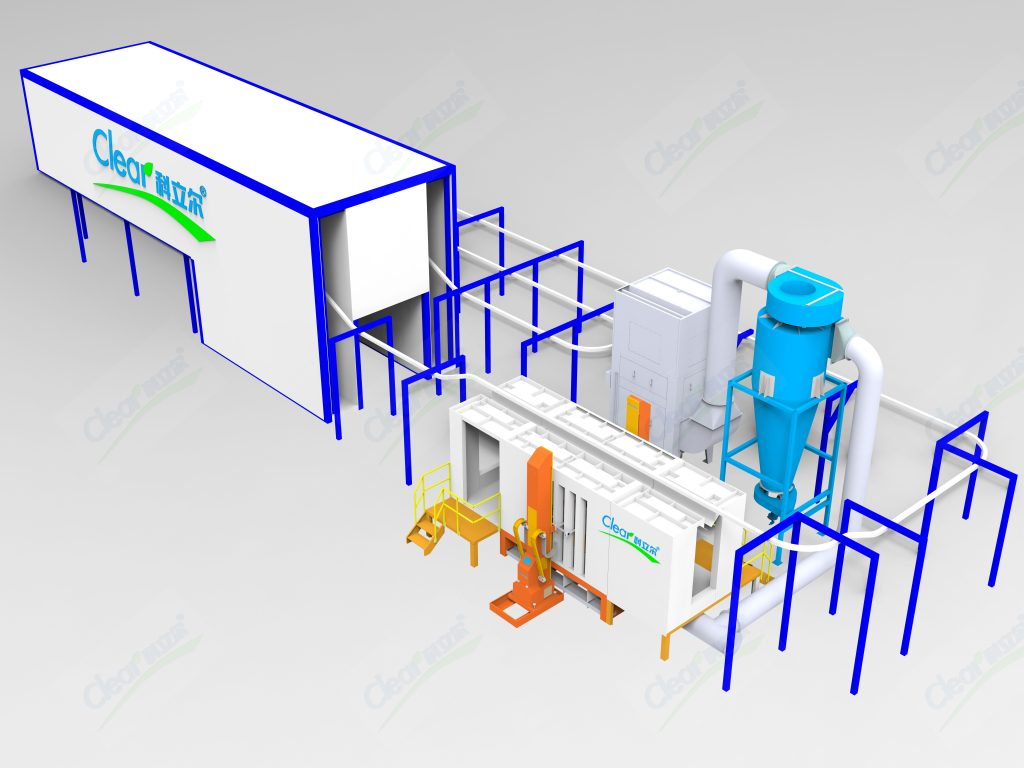At Yantai Clear, we’ve designed and installed powder coating line for over two decades. Whether it’s a fully automatic system or a manual setup, we’ve seen one thing ruin perfect coating more than any other: pretreatment defects.
You can invest in the best spray booth, curing oven, or powder supply center—but if your pretreatment section has hidden problems, you’re just coating over a weak foundation.
Let me share with you how we, as equipment manufacturers, check for pretreatment defects before they cause coating failures.
Why Pretreatment Is So Critical
Pretreatment is the first defense against corrosion, poor adhesion, and finish failure. In a typical powder coating line, this involves degreasing, water rinsing, surface conditioning, phosphating (or chromating), and final rinsing—often followed by drying.
But issues can hide in these steps—issues that won’t show until your customer calls you back in six months, asking why their frames are rusting from the inside out.
5 Key Pretreatment Defects You Must Catch Early
1. Water Stains or Residue Marks
What to look for: Uneven marks, white spots, or oily films on metal surfaces before powder application.
Cause: Incomplete rinsing, contaminated rinse tanks, or poor-quality DI water.
Our tip: Use clean microfiber gloves and inspect under white light. If it smears or leaves a fingerprint, it’s not clean enough.
2. Flash Rusting on Steel
What to look for: Yellow-brown discoloration after drying, especially in corners or weld joints.
Cause: Excess moisture or delays between rinsing and drying.
Our tip: Reduce time between final rinse and drying. Increase airflow in the drying tunnel if needed.

3. Silicone or Oil Contamination
What to look for: Fish-eyes or craters in the final powder coat film.
Cause: Lubricants on parts, unclean hooks, or workers’ skin oil.
Our tip: Use alkaline degreasers with proper agitation. Change gloves often during handling.
4. Phosphate Layer Too Thin or Too Thick
What to look for: Poor adhesion, chipping after curing, or powder flaking.
Cause: Incorrect temperature, pH, or dwell time in the phosphate tank.
Our tip: Regularly measure coating weight (ideal: 1.5–3.0 g/m² for zinc phosphate) and adjust dosing accordingly.
5. Carryover Between Stages
What to look for: Cross-contamination in rinse tanks, inconsistent pH values.
Cause: Poor drain times, excessive line speed, or overloaded racks.
Our tip: Add drip zones between stages and monitor conductivity of each tank daily.
What We Do in Our Powder Coating Line Projects
In every powder coating line we build—manual, semi-automatic, or full automatic—we emphasize pretreatment quality control. We recommend:
Installing pH and temperature sensors in each tank.
Designing buffer zones to avoid water drag-in.
Using stainless steel nozzles in spray tunnels to ensure even and powerful impact.
Adding online conductivity meters for rinse tanks.
We also train your staff onsite to recognize problems before they reach the powder booth.
Powder coating isn’t just about the final color. It’s about what’s underneath.
We’ve seen companies struggle with warranty claims, only to find their pretreatment had been failing quietly for months. That’s why we make it a rule: Check the surface before coating. Every time.
Whether you run a basic manual line or a fully automatic powder coating line with overhead conveyors and a gas oven, don’t overlook the silent damage a bad pretreatment can do.
📞 Need help optimizing your pretreatment section?
We customize complete powder coating lines based on your product, material, and throughput. From phosphating tanks to drying tunnels, we’ve got every detail covered.

